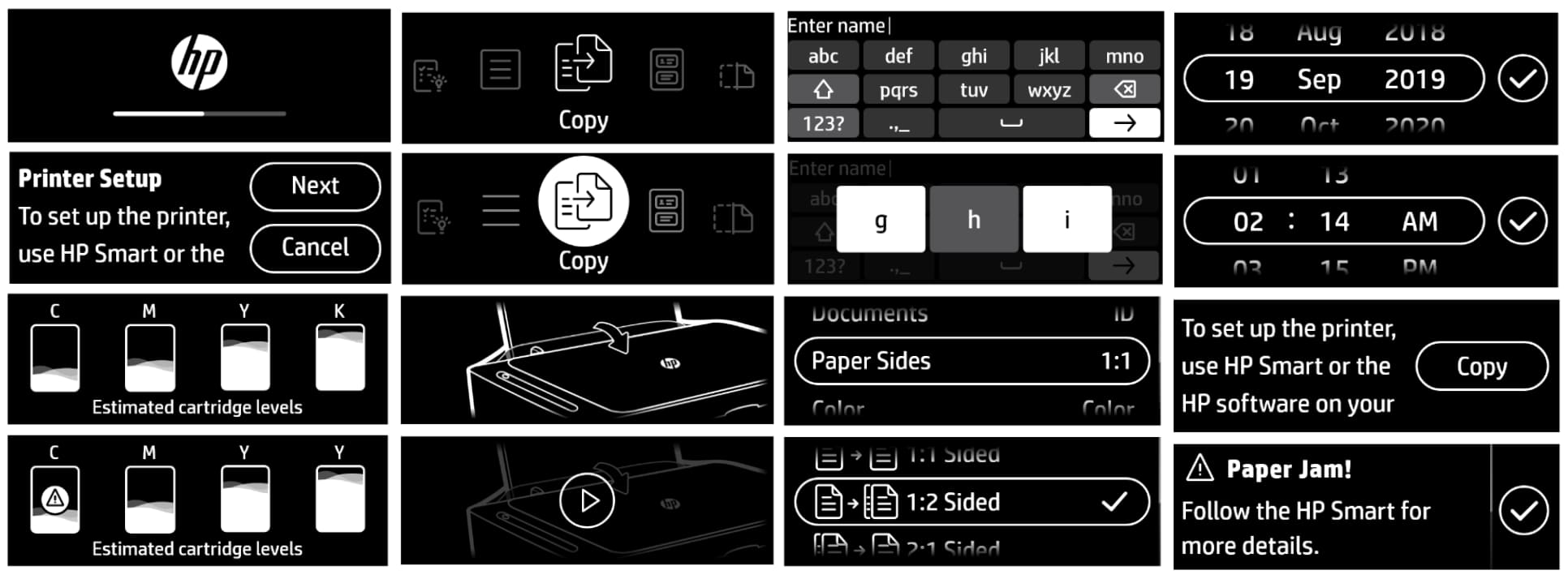
information architecture for all home, SMB and enterprise HP printers
lead information architect // design strategy • design leadership • information architecture • UX design • UI design • UX research
As lead information architect for HP's new suite of embedded interfaces, I had the privledge of collaborating with diverse teams across multiple organizations to create a unified information architecture for all current and future HP printers. The IA leverages a single code base, while serving multiple user segments, dozens of products, and accomodating the unique needs of what had previously been 4 separate architectures across 4 disparate code bases. I successfully created a simplified, flatter yet scaleable UI architecture that improved discoverability and accelerated task completion across all UI classes and for all users.
Printers featuring this new UI architecture have won Forbes' Best Printer in 2024 and 2025, and the Magic Touch Panel UI received a special mention at the 2022 UX Design Awards.
« The HP Magic Touch Panel UI succeeds with a minimal yet elegant design. The user interface concept is self-explanatory, clear and simple. This humble solution simply achieves its goals. By promoting a more minimal, subtle and elegant approach to UI, the HP Magic Touch Panel opens new possibilities for products in general. »
Tapani Jokinen, UX Design Awards jury
business goal
HP aimed to create a new unified code base for all new printers, requiring a unified information architecture able to support diverse users, business needs, and multiple classes of UI touch panels.By unifying not only the code bases but also the user experiences, HP sought to reduce complexity, improve efficiency, and ensure long-term scalability.
user experience goal
The new architecture needed to streamline navigation, improve usability, and create consistency for users engaging with printers at both home and work, while maintaining the unique needs and use cases of Consumer, Home Business, and Enterprise users. My primary goal was to create an information architecture that reflected the diverse needs of users, and to champion simplicity and discoverability.
design process
01/ discovery and alignment
I worked closely with stakeholders across multiple global teams, including product managers, engineers, visual design leads and UX leads, to understand the existing architectures, technical constraints, UI patterns and user needs. Through stakeholder interviews, audits, and analysis of HP's legacy UIs, I identified key pain points and opportunities for a more cohesive information architecture.
02/ definition and exploration
Developing the new Information Architecture involved balancing consistency of content and structure, with the unique needs of each user segment, defining content hierarchies and navigation patterns to support consumer, SMB and enterprise experiences. Through collaborative workshops and reviews, I refined the architecture in partnership with stakeholders and design leads, and worked closely with developers to ensure feasibility while maintaining a seamless user experience.
03/ validation and iteration
Multiple rounds of tree testing and card sorting were used initially to evaluate the clarity and effectiveness of the information hierarchy and content strings. Once an overall framework was aligned on, prototypes were created in collaboration with design teams for each business to gather more detailed user feedback for each UI class, and ensure the navigation was intuitive and met the needs of each user segment. User feedback led to further refinement of the IA and ultimately to the removal of an entire UI class.
04/ delivery and implementation
I worked closedly with design and engineering teams to create and deliver documentation of the new information architecture structure. This included thousands of rows of complex documentation of each common and unique UI element for each UI class, and close collaboration following delivery to ensure the final implementation aligned with the unique intended experience for each UI and user segment. Delivery also included detailed hand-off the documentation to a design team who would maintain the IA system long-term, as new products would be added and new features would be integrated into the IA.


